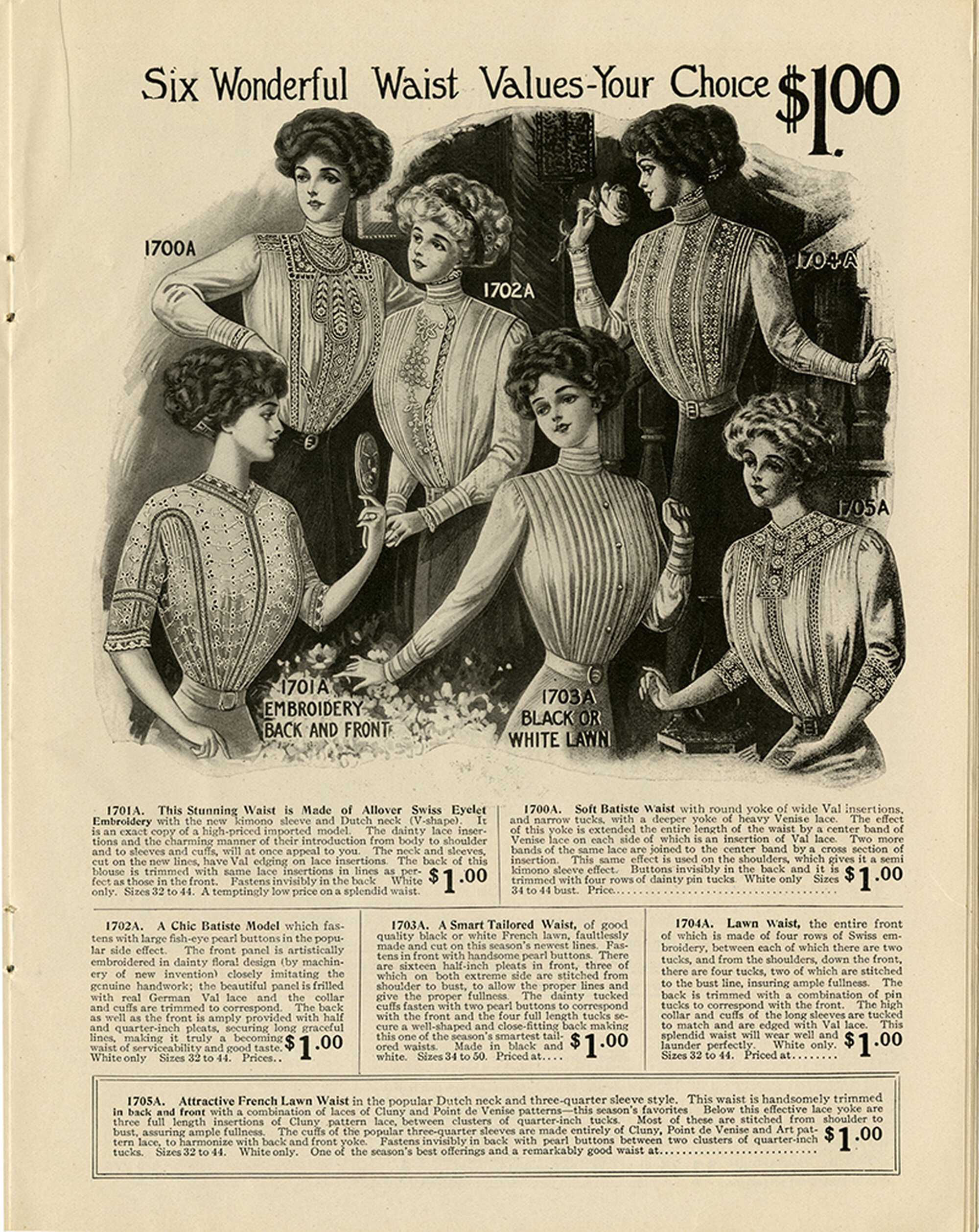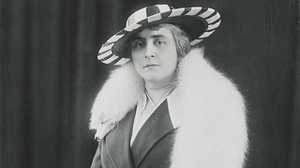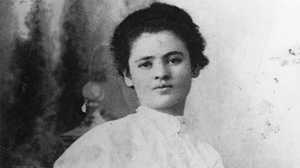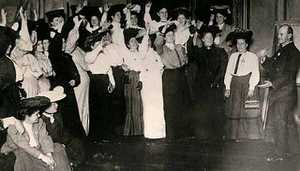What is a Shirtwaist?

A button-down blouse, the functional shirtwaist was valued for its ready-to-wear, workplace appeal and its simple design, originally modeled on menswear shirts. It could be worn jacketless and fashionably tucked into the waistband of a skirt, and it was sold as both an individual piece and as an ensemble. By the early 20th century, designers added lace and frills to embellish the iconic blouse, which was already available in every color. Articles in Vogue magazine and advertisements showed various enhancements, including elaborate details and stitching to the collars, wrist cuffs, and bodies that elevated the simple blouse to haute mode. An article written for the Pittsburgh Press on September 16, 1906, stated, "A very fashionable woman with a half a hundred waists boasts that there are no two alike."
At the turn of the 20th century, production of the shirtwaist was a competitive industry. Although sold across the country, the majority of shirtwaist blouses were created in Philadelphia and New York City. In Manhattan alone, there were over 450 textile factories, employing approximately 40,000 garment workers, many of them immigrants. The Triangle Shirtwaist Factory, located in the top floors of the Asch building in Greenwich Village, was one of many shirtwaist factories operating in Manhattan at the time. This boom in industry helped solidify New York's status as an industrial center and provided jobs to the thousands of immigrants that arrived daily at Ellis Island.
The shirtwaist, however, came to represent more than a momentary fashion trend; the blouse was a symbol of newfound female independence in a time of progressive ideas. With their own jobs and wages, women were no longer dependent on men and sought new privileges at home and at work. The figure of the working woman, wearing the shirtwaist blouse and freed from domestic duties, was an iconic image for the women's rights movement.







